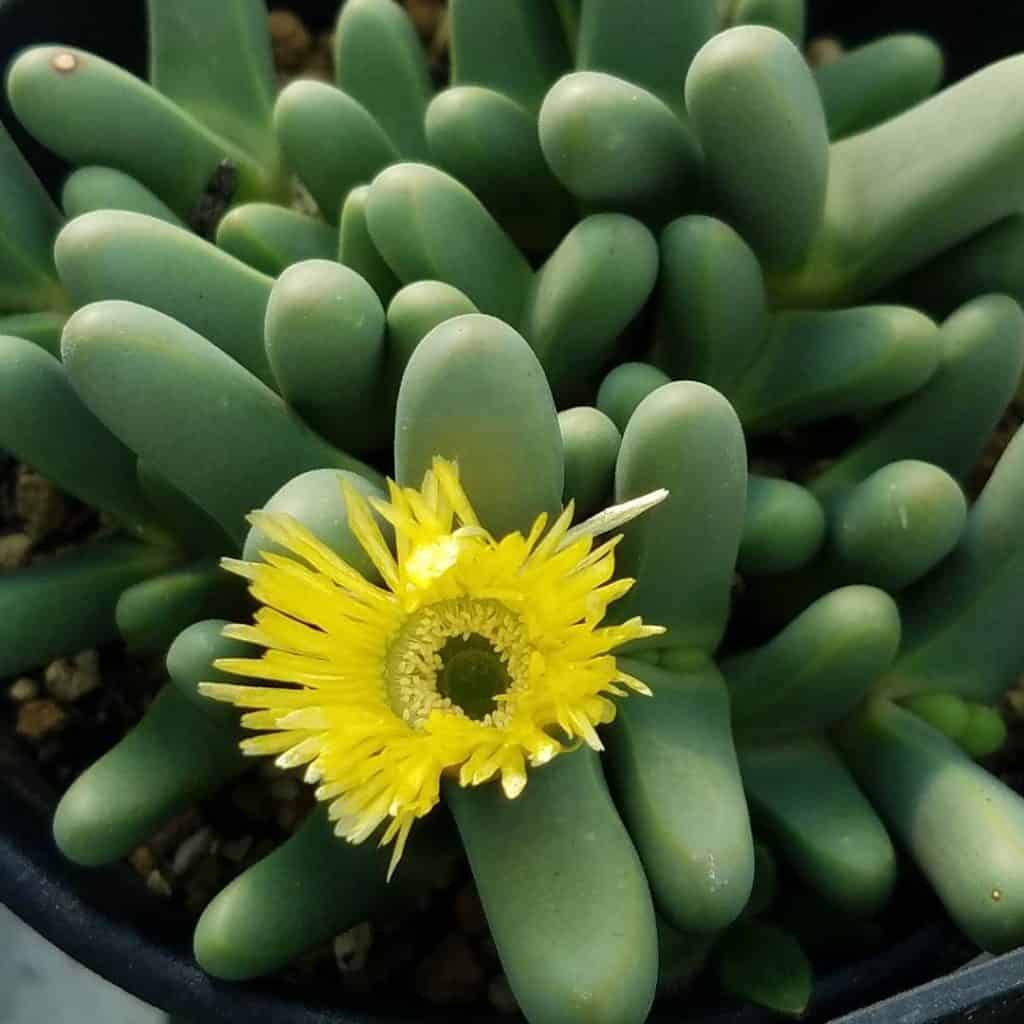Argyroderma fissum: Characteristics and Care
Succulent lovers, get ready to be charmed by a delightful little plant – the Argyroderma fissum. At first glance, this South African native may not seem like much, just a cluster of bluish-green leaves resembling tiny pebbles. But don’t be fooled by its unassuming appearance!
When the winter months arrive, these stone-like leaves transform into a stunning display of vibrant, showy flowers in shades of magenta, yellow, or pink. It’s a metamorphosis that will leave you amazed and appreciating the simple beauty of nature.
Intrigued? Let’s dive into the world of Argyroderma fissum and learn how to properly care for and cultivate this fascinating succulent.

Contents
About Argyroderma fissum
Native to the arid Knersvlakte region of South Africa, Argyroderma fissum is a perennial succulent that forms clumps of bluish-green, bi-lobed leaves. It’s a true miniature marvel, growing no taller than 8 inches (20 cm) in height. But don’t let its small stature fool you – this little guy packs a serious punch when it comes to interest and character!
The leaves of Argyroderma fissum are stemless and resemble tiny stones, giving the plant its distinctive lithops-like appearance. During the winter months, solitary, photosensitive flowers bloom, adding a burst of color to this living sculpture.
Related Post:
1,000 Types of Succulents [With Pictures]
How to Care for Argyroderma fissum
Light Requirements
Argyroderma fissum loves basking in the sun, just like its arid South African homeland. During its growing season (winter and fall), make sure to provide plenty of direct sunlight to encourage healthy growth and flowering. You can even use a grow light to supplement natural light if needed.
However, during the summer dormancy period, it’s best to provide some afternoon shade to protect the plant from the intense midday rays.
Watering Needs
When it comes to watering, less is definitely more for this drought-tolerant succulent. During the winter growing season, you can water regularly, but be sure to let the soil dry out completely between waterings. In the summer dormancy period, water sparingly, maybe once every two to three weeks, just to prevent the plant from completely shriveling up.
Overwatering is a big no-no for Argyroderma fissum, as it can lead to root rot and burst leaves. Trust us; you don’t want a soggy succulent situation on your hands!

Soil and Fertilizer
Like most succulents, Argyroderma fissum thrives in well-draining soil mixes specifically formulated for these water-wise plants. A gritty mix with sand, gravel, and a neutral pH is ideal for promoting healthy growth and preventing root rot.
As for fertilizer, a balanced, slow-release succulent fertilizer applied during the growing season can give your Argyroderma fissum a nice boost. But don’t overdo it – a little goes a long way with these low-maintenance beauties.
Temperature and Humidity
Argyroderma fissum loves it hot and dry, just like its native South African climate. It’ll thrive in warm temperatures and low humidity levels, making it an excellent choice for indoor growing in dry environments.

Pests and Problems
One of the best things about Argyroderma fissum is its resistance to pests and diseases. However, keep an eye out for the occasional mealybug or aphid infestation, and treat promptly if you notice any plant damage.
The biggest threat to this succulent is overwatering, which can lead to root rot, yellowing leaves, and a generally unhappy plant. If you notice these signs, move your Argyroderma fissum to a well-draining soil mix and adjust your watering habits accordingly.
Pruning
Argyroderma fissum is a low-maintenance plant when it comes to pruning. Occasionally, you may need to remove any damaged or withered leaves, but that’s about it. No need for extensive grooming sessions with this easygoing succulent.
Potting and Repotting
Thanks to its compact root system, Argyroderma fissum doesn’t require frequent repotting. However, if you notice signs of root rot or soggy soil due to overwatering, it’s time to give your plant a fresh start in a new, well-draining container.
Argyroderma fissum Propagation Methods

Argyroderma fissum is a succulent that can be easily propagated from seeds or by dividing larger clumps. However, starting new plants from cuttings can be quite tricky.
From Seeds:
- Sow seeds in a well-draining succulent mix
- Keep the container out of direct sunlight and in a warm spot around 70°F (21°C)
- Seeds typically germinate within 7-14 days under ideal conditions
From Offsets/Divisions:
- Spring is the best time for dividing larger clumps
- Gently dislodge the plant from the soil, taking care not to damage the roots
- Separate the offsets or divisions from the main plant
- Replant the divisions in a fresh, gritty succulent mix
While propagating from stem cuttings is possible, getting Argyroderma fissum cuttings to take root can be quite challenging. If part of the cutting starts to rot, you may be able to remove and try rooting a healthy section.
The good news is that Argyroderma fissum is very easy to start from seed, making seed propagation a reliable method for multiplying your collection of these fascinating succulents.
